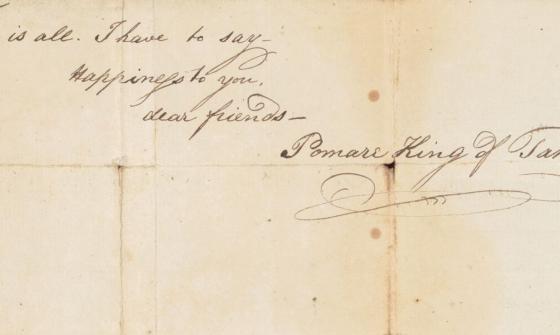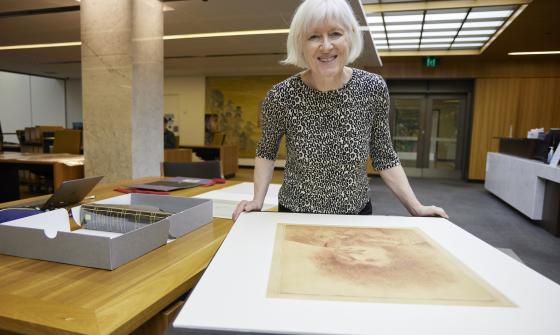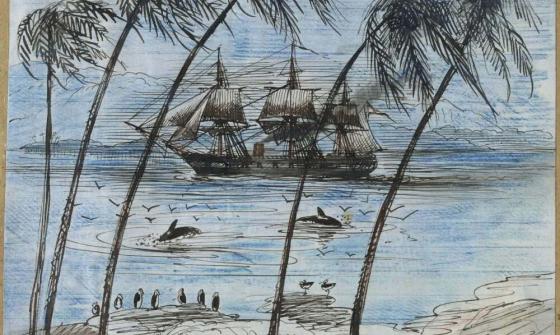The introduction of writing in Polynesia
Last year, author and editor Dr Christina Thompson joined us at the Library as a National Library of Australia Creative Fellow in Australian Writing. Using our collections, Dr Thompson sought to create a work of creative nonfiction that tells the story of what happened when writing arrived on the islands of the Pacific.
During her time at the Library, we asked her some questions about her research, her discoveries in the collection and her time as a Fellow.
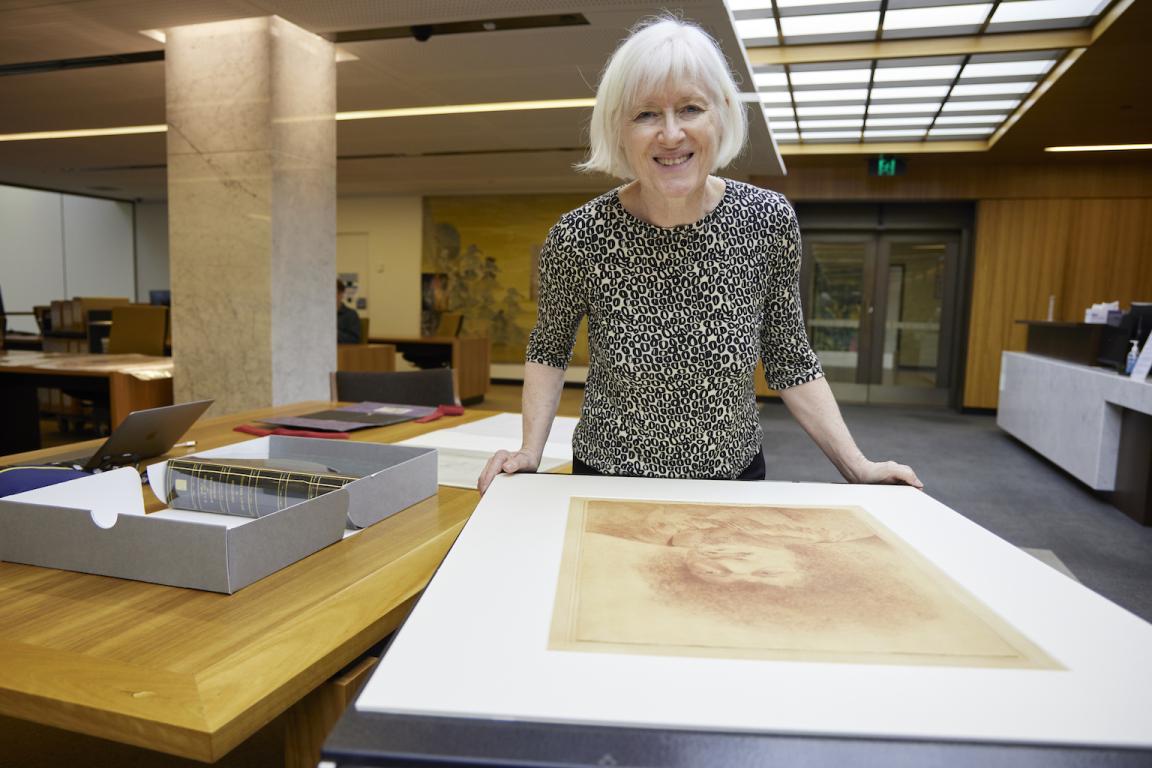
Dr Christina Thompson with Willaim Hodges, Otoo, King of Otaheite [i.e. Tahiti], 1773, nla.gov.au/nla.obj-134429610
Dr Christina Thompson with Willaim Hodges, Otoo, King of Otaheite [i.e. Tahiti], 1773, nla.gov.au/nla.obj-134429610
What are you researching and how did you first become interested in this topic?
I am researching the introduction of writing in Polynesia in the early 19th century. I first became interested in this topic when I was doing the research for my last book, Sea People, which examined the debates around Polynesian voyaging. One of the subjects I tackled in that book was the question of what can be known about Polynesian history from the surviving oral traditions. Most of those traditions were documented, and thus preserved for posterity in a rapidly changing world, by missionaries and mission-trained Islanders, and it became clear to me that there was a story here about those two groups. I began to wonder about the process by which Islanders became literate: how did that happen? Who was involved? What was the process? And what were the consequences?
Why did you want to research at the National Library?
I was interested in both manuscript and printed materials from early 19th-century Tahiti. These included handwritten letters by Pōmare II, a Tahitian chief, styled King of Tahiti, as well as letters and journals by various members of the London Missionary Society, whose first successful Pacific mission was in Tahiti. I was also interested in the spelling books, arithmetic books, primers and gospels that were printed at the Windward Mission Press on the nearby island of Mo‘orea. These unique objects are, in some cases, digitized. But there is no substitute for seeing them in person.
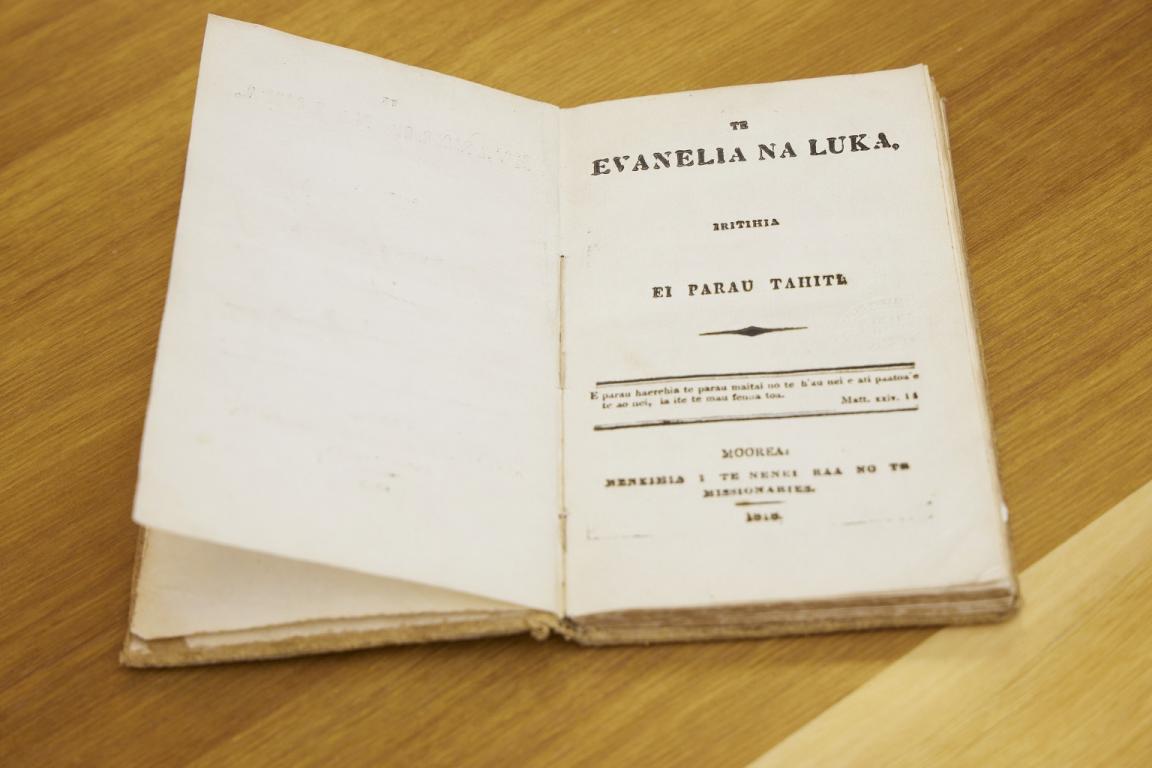
Te Evanelia na Luka iritihia el parau Tahiti. Moorea : Neneihia i te Nenei Ria no te Missionaries, 1818, nla.gov.au/nla.cat-vn8041098
Te Evanelia na Luka iritihia el parau Tahiti. Moorea : Neneihia i te Nenei Ria no te Missionaries, 1818, nla.gov.au/nla.cat-vn8041098
What did you find most surprising about the collection material you were working with?
I was surprised by how much individuality there was in Pōmare’s letters. There are not that many of them and they are comparatively short; also they are written in Tahitian and so the translation matters. But I found them extremely moving and fascinating for what they managed to reveal about the personality of the man.
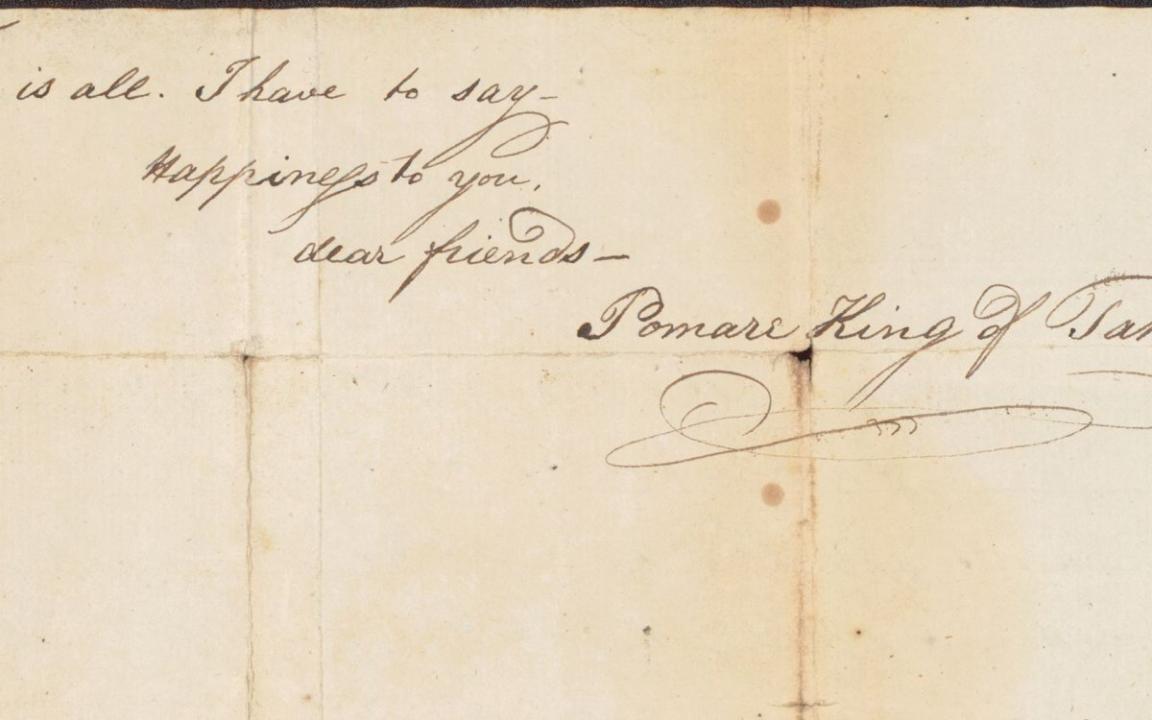
Part of Letter of Pomare II, King of Tahiti, 1806 (detail), nla.gov.au/nla.cat-vn1813553
Part of Letter of Pomare II, King of Tahiti, 1806 (detail), nla.gov.au/nla.cat-vn1813553
Fascinate us with a story about something you discovered...
I found the early printed books from the Mission Press incredibly beautiful. The paper, the bindings, even the printing itself — when one thinks about the rugged conditions in which these objects were created — spoke of a degree of effort and conviction that was also very moving to me. I particularly loved an early copy of the Gospel of Luke. This was the first of the Gospels to be translated into Tahitian by a missionary named Henry Nott working with Pōmare. Printed on the first press in the Pacific Islands, it is bound, quite unusually, in tapa, which is a type of cloth made from the bark of the paper mulberry tree. It is also beautifully decorated with a design stamped in a reddish ink made from the juice of the mountain plantain
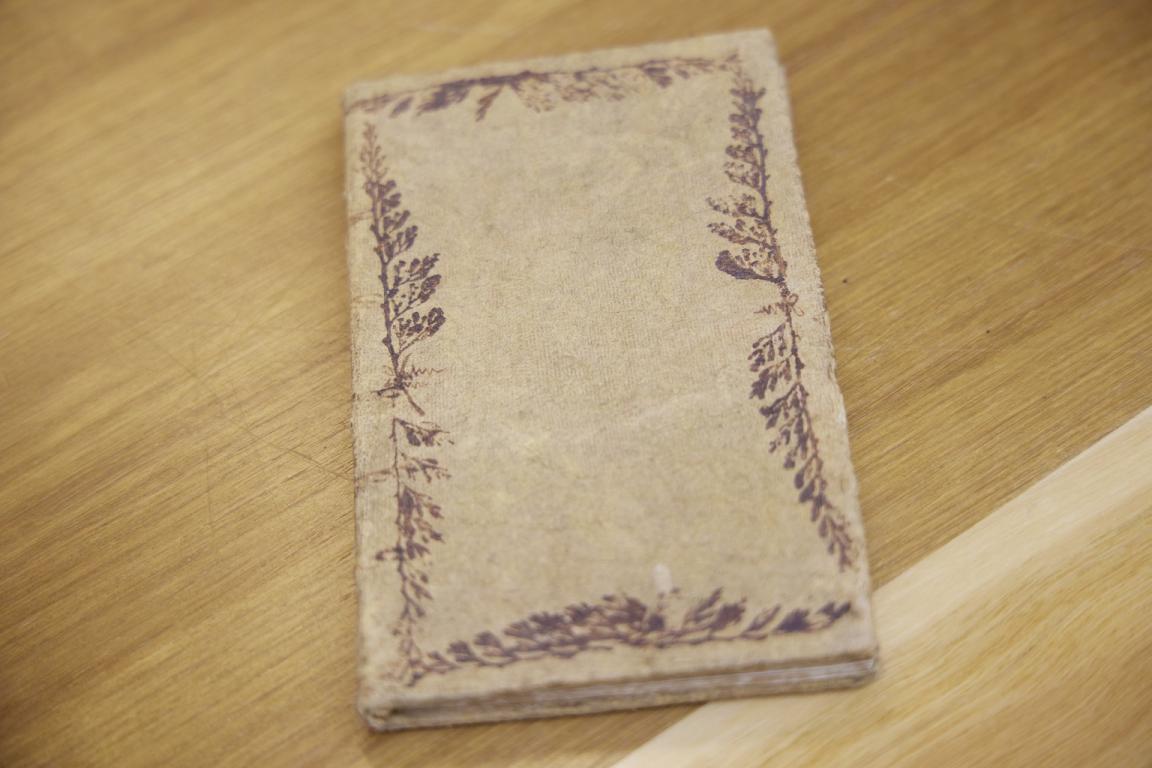
Te Evanelia na Luka iritihia el parau Tahiti. Moorea : Neneihia i te Nenei Ria no te Missionaries, 1818, nla.gov.au/nla.cat-vn8041098
Te Evanelia na Luka iritihia el parau Tahiti. Moorea : Neneihia i te Nenei Ria no te Missionaries, 1818, nla.gov.au/nla.cat-vn8041098
How are you planning to use what you’ve discovered through our collections?
I will be working on a book of creative non-fiction about the introduction of writing to the islands of Polynesia, including Tahiti, Hawai‘i Aotearoa/New Zealand, and possibly the Cook Islands.
Would you recommend a Creative Arts Fellowship to others?
The Creative Arts Fellowship was a wonderful experience. The Fellowship staff were incredibly helpful and friendly, making introductions for me, helping me navigate the collection, and just offering help and support in numerous small ways. I had an extremely productive month at the Library, loved being in Canberra, and only wished I could have had double the time. It was a fabulous experience that I would recommend to anyone with a desire to spend a little time with these collections.
